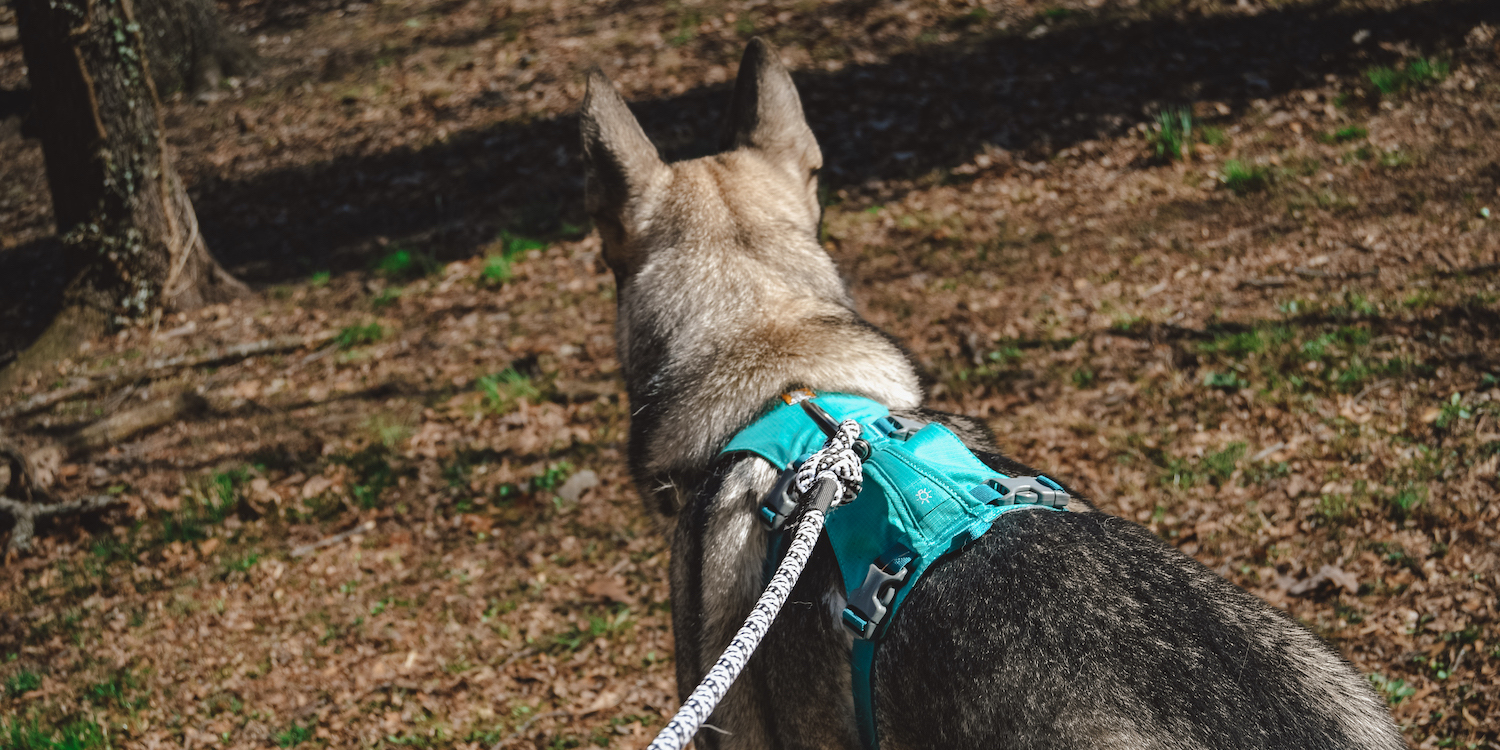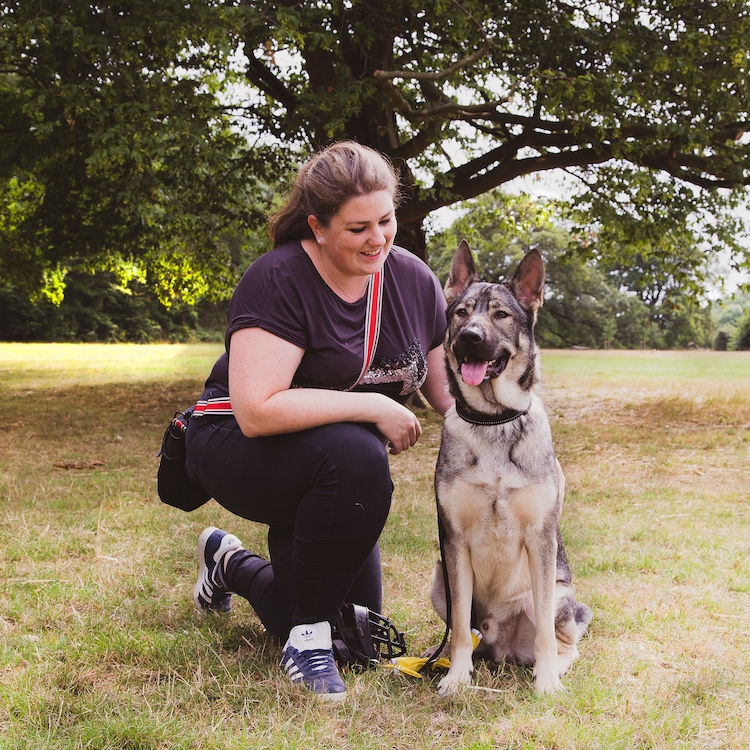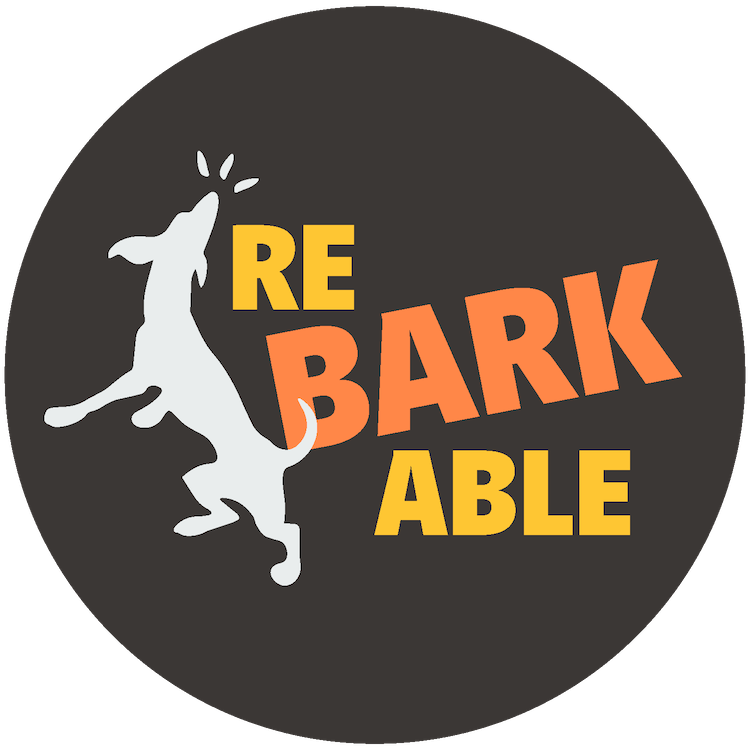
Do you dream of a loose lead so you can walk down the street and bring the enjoyment back to your walks?
I totally get you. Honestly.
It’s also one of the most commonly complained about behaviours in the modern dog. 82.7% of dog owners in a recent study are in the same boat as you so you’re not alone, and even amongst my clients! It’s something I tackle with my dog training clients regularly.
Today, I want to share with you a whole bunch of tips. My very best tips to get you and your woof walking in sync!
1. Get the right gear
Before you start, it’s really important to start with the right kit.
If your dog pulls, you absolutely do not want a dog that pulls to be on a collar. It’s going to create a bigger problem that only your vet can remedy.
I always recommend a harness (here’s my favourite harnesses), a double-ended training lead, and a whole bunch of treats.
I want to make this clear that this means no flexi-leads, no bungees, just a flat lead and a harness.
Question: Don’t Harnesses Make Dogs Pull?
No! This is a really common myth. Why? Because the equipment is never responsible for a dog’s learning. That responsibility is on us, humans! It’s important to understand that a dog’s natural pace is faster than a humans, which is why they pull.
2. Get the "Why"
Then you’ve got to understand why your dog pulls. Ask yourself some questions:
For example, Indie, my German Shepherd cross, pulls until he does his business the first time. That I don’t mind much! But if your dog is pulling towards a lamp post, then they’re pulling to smell.
Once you find your why, you can figure your plan.
“Different dogs are motivated by different things!”
3. Get the right reward
Different dogs are motivated by different things! So, if you get the right motivation, you’ll train in the easiest way possible.
Your options are usually:
A – High Value Treats work well, and when I’m considering high value, my defaults are chicken, cheese, ham, hotdogs! Get adventurous! Whatever your dog loves, get that involved!
(unless it’s socks, socks are a no-no)
B – Toys work really well too, depending on what motivates your dog. It may be a squeaker, it may be a tuggy toy, it may be a ball. A pro-tip with a ball though is always have a second one!
C – Praise, Affection & Tone. Don’t forget to use tone. This can be a powerful motivator too, so make sure to use lots and lots of encouragement. You may even want to start with a constant stream of “Good girl, well done!”, “That’s it puppy, keep it going.”, “Yes, little one!” Let’s go” etc. because you’d be surprised how much your dog will feed off this.
Note! If you have an excitable dog, or one of these is too powerful (aka. Your dog can’t focus because you have a ball in your hand, or the treat is too much, and saliva is flowing like a waterfall, then downgrade a little).
“If you get the right motivation, you'll train in the easiest way possible”
4. Practice in low distraction environments
Always… always start in your home.
You want the most boring space in the world to begin your training. Grab your lead, grab your harness, attach it and start your process. This being super boring means that what you’re using as a reward, Is even more powerful. It gives you an advantage to instill a learned behaviour before trying to do it at the dog park.
As you see success, beginning in your home, then add in a distraction. Move to your yard to add in more distraction, then the street and add in more distraction, then try your park.
And remember, in places where you can’t control the power of the distraction (e.g. playing dogs at the park!), increasing your distance to that distraction is really going to help your woof to focus.

5. Make the space around you the most rewarding place
This principle is one you can observe in your kitchen. Where does your dog choose to hang out when you’re preparing a sandwich? Or dinner?

Right at your thigh, right?
Why is that?
Because that is the place where you’re most likely to yield to puppy eyes, and the spot where they can get to what you dropped before you do.
So, take that theory, and apply it to a loose lead walk.
Any time your dog is in the circle around you that leaves your flat lead slack (aka loose) then they get rewards and that’s the only zone in which your dog is getting a reward whilst you’re teaching this. (This works for recall too by the way!)
6. Don't expect too much, too quick
You can totally accomplish this in a short amount of time, however, you should balance the ask you’re making of your dog. So, whilst you may see very quick listening to a good loose lead for a few steps, you may struggle to change that from a few yards, to a mile in a few days. Take your progress one day at a time.
Slow down your rewards a smidge, and your praise and expect a little more at a time. Even if it’s one step more, two steps more, to the street corner, etc. Manage your expectations and both of you will win!
7. Practice on and off-lead
This sounds silly, huh? But the lead itself is actually not that important. If you’re stalling on your training? Try going back a step and adding in more difficulty with distractions and sometimes you can even do it off lead too. This just instills that this is the zone you want to be in.
Your loose lead is coming
This sounds silly, huh? But the lead itself is actually not that important. If you’re stalling on your training? Try going back a step and adding in more difficulty with distractions and sometimes you can even do it off lead too. This just instills that this is the zone you want to be in.
Our Expert
Ali Smith is an award winning modern, force free trainer originally from the UK but living in Maryland, US. She specialises in puppies and reactivity but loves all things dog. If you want more advice from Ali, you can find her at rebarkable.com, the blog and Instagram! She’s always happy to help dog parents improve their relationship with their dog.
Find out more:

